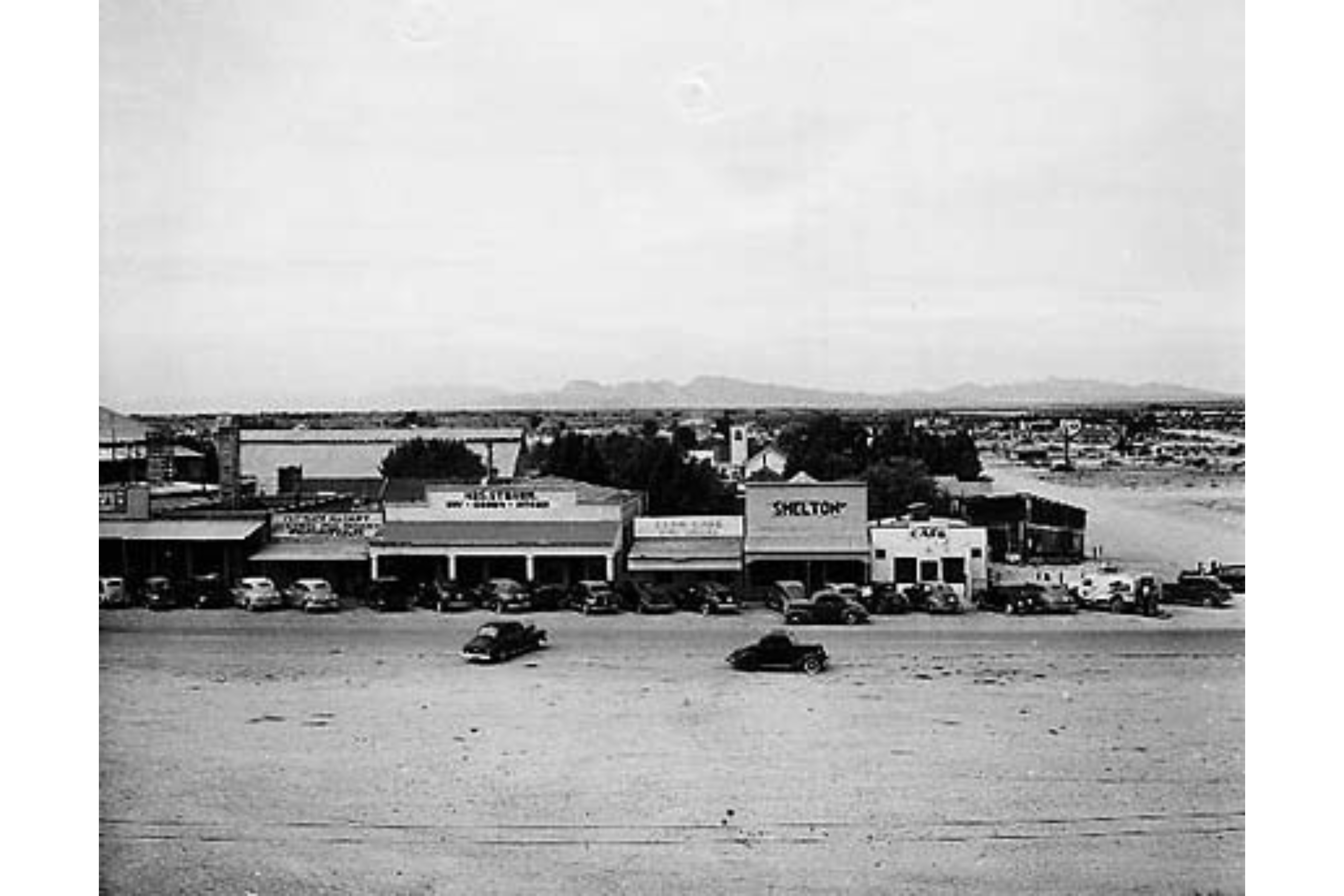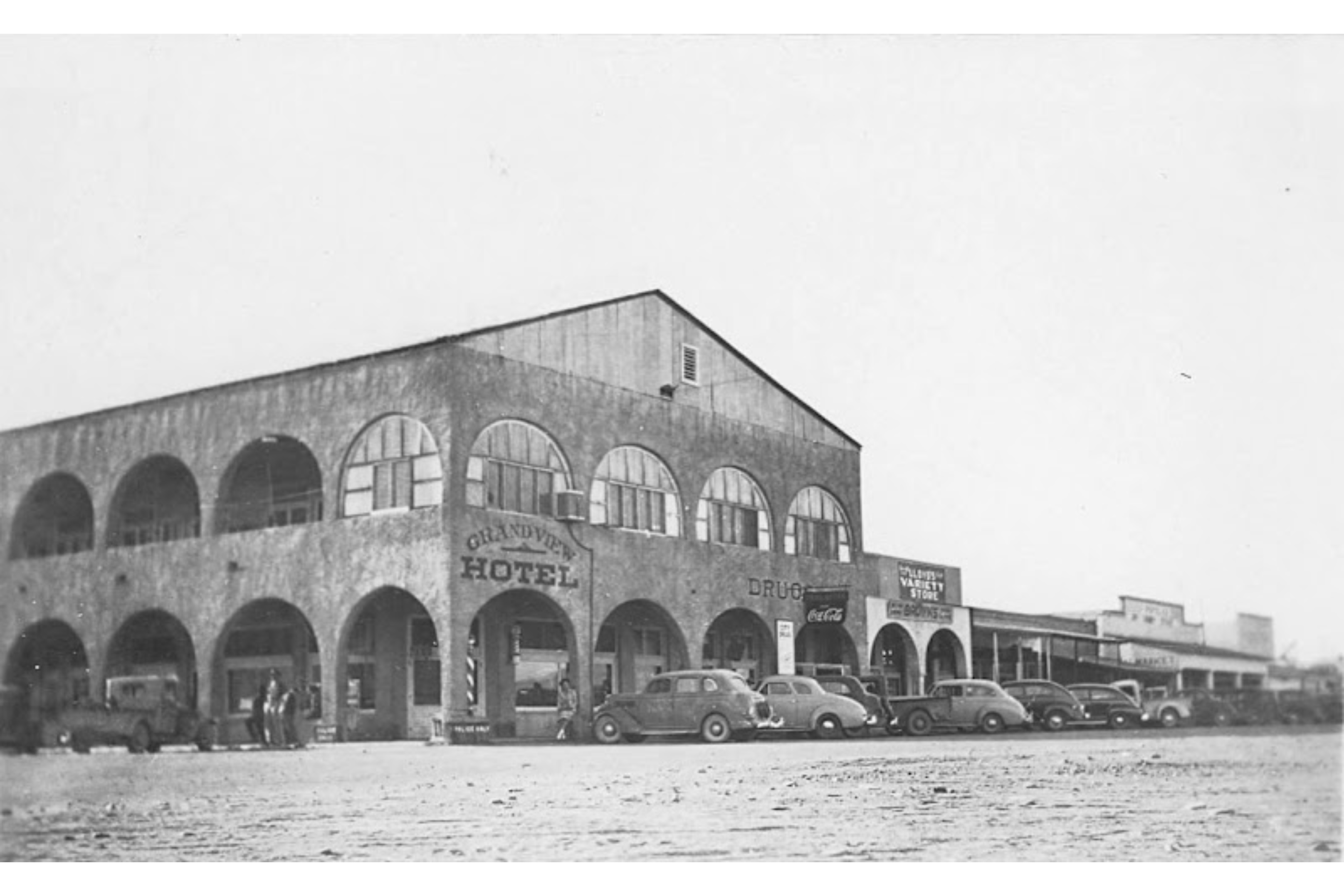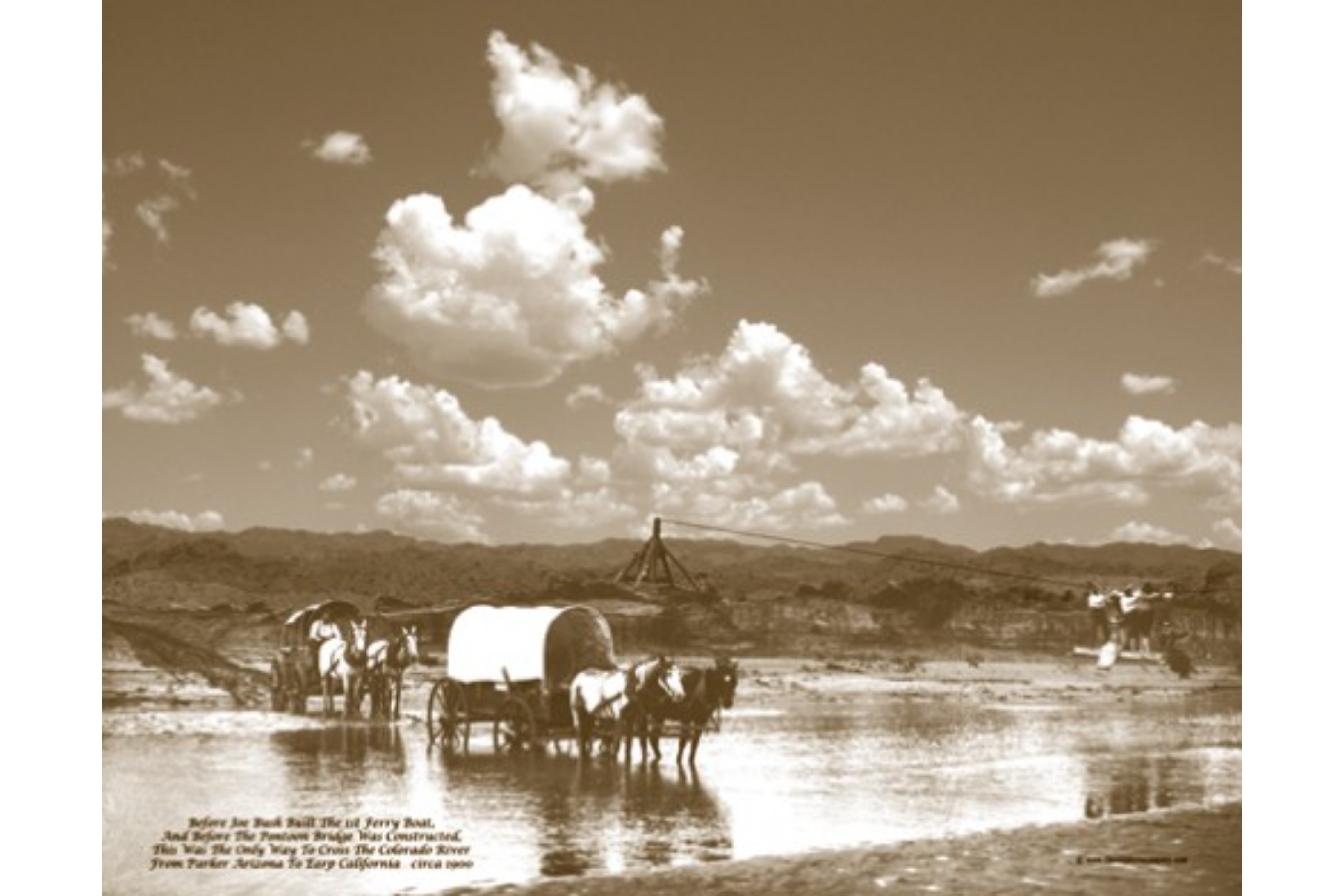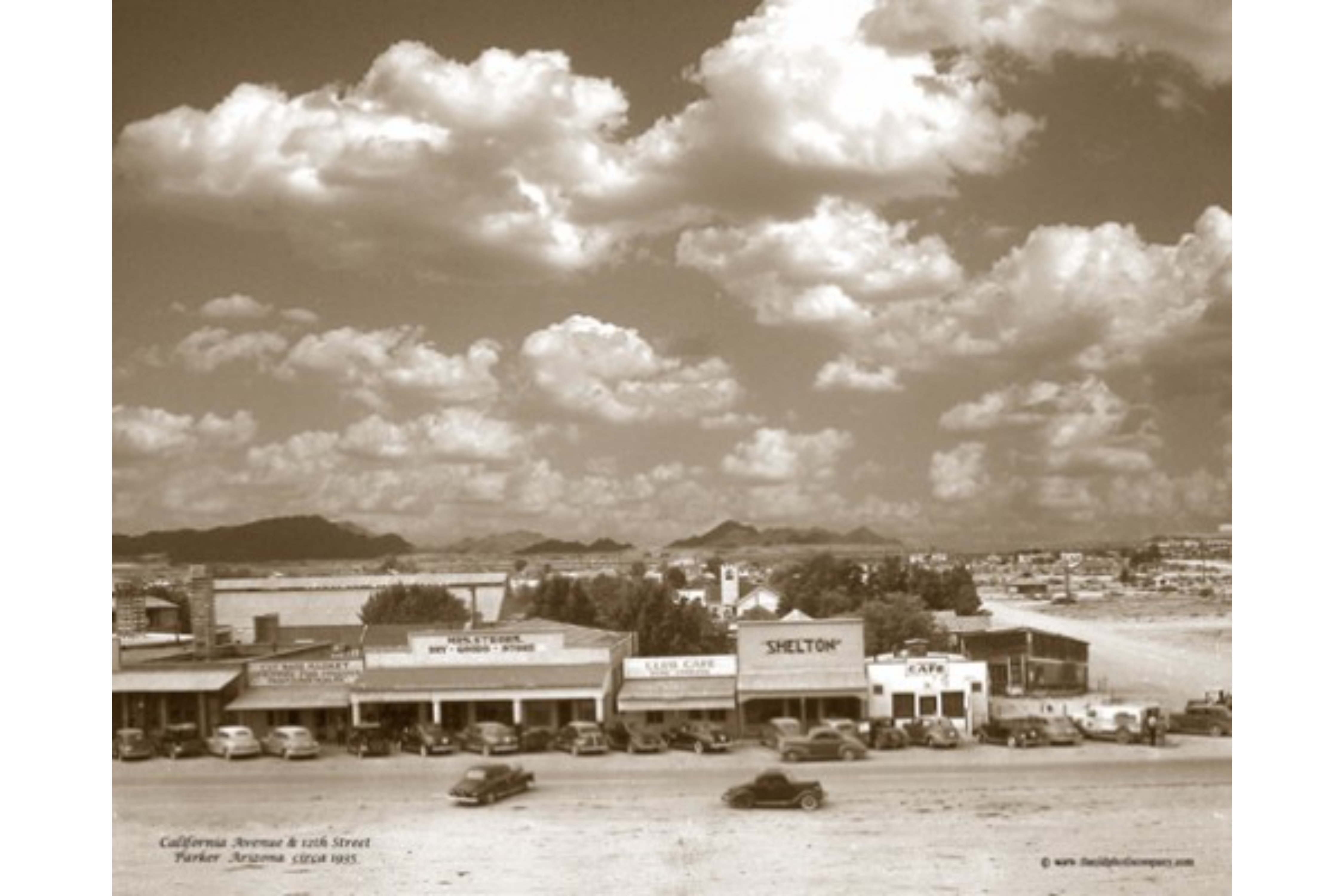

Agricultural development, which is the present economic mainstay of the area, commenced on March 2, 1867, when Congress appropriated $50,000 for the Indians’ irrigation system. This money was used for the construction of the Grant-Dent canal from 1867 to 1871. Early irrigated farming was dismal and painstaking – banks washed away, canal caved in, wells served up alkali water, river flooding washed out new construction and equipment. However, these early failures did not discourage those who had visions of a great agricultural empire. By 1914 only 600 acres of Indian-owned land were being irrigated and inadequate drainage was water logging the majority of those acres. At this time, the Town of Parker had a population of 90, and the principal economic activity of the Town was a service and shipping center for agriculture and mining activities scattered throughout the area.
Regardless of the frustrations and problems connected with irrigation, agricultural activity on the reservation continued to expand while mining activity slackened. In 1936, over 5,000 acres of river bottomland were under irrigation. By 1941, when Headgate Rock Dam was constructed, there were 10,5000 acres of land under cultivation, and the guaranteed water level provided by the dam accelerated agricultural expansion. By 1955, 38,000 acres had been cleared for farming. During the time the Town of Parker took on the importance and character of a small agricultural service and shipping center. While Headgate Rock Dam ensure a controllable river water level, agricultural expansion proceeded at a rather fast pace. However, farming was plagued by high water tables, improper drainage and excessive salts rendering hundreds of acres useless for farming. This problem was resolved over the next seven years, and by 1963, land under cultivation accounted for 34,000 acres. Cotton became the big crop, and cotton gins were constructed in the Town of Parker. Between 1914 and 1937 Parker existed as a small community providing supplies and services to the agricultural and mining operations of the area, and in the late 1930’s it provided community facilities to the construction and administrative people working on federal projects along the Colorado River. After World War II, tourists, sportsmen, and winter residents also became attracted to the smooth waters behind Headgate Rock Dam.

The Town of Parker officially incorporated as a town in 1948. In 1980, Parker annexed 13,000 acres of non-contiguous land ten miles to the southeast known as Parker South. In May 1982, by initiative petition, voters formed La Paz County from the northern portion of Yuma County. On January 1, 1983, Parker became the county seat for La Paz County.




